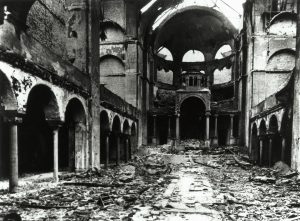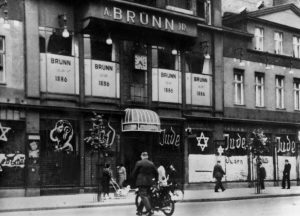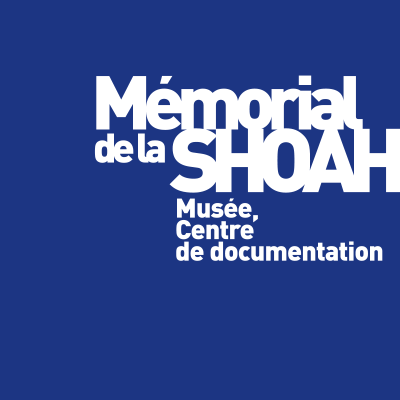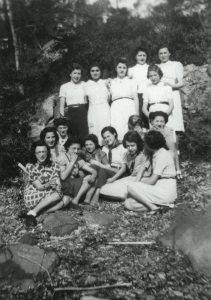Crystal Night
What is the 'Kristallnacht'? Why did it take place? How did it unfold?
Discover our online resources to share the story of this event with your students.
Nuit de Cristal website

The great synagogue of Berlin burned during the Kristallnacht, Berlin. Germany, 11/1938
Credits: Shoah Memorial
After five years of National Socialism, the leaders of the regime note that, despite threats and bullying, three-quarters of the Jewish population of the Reich have chosen to stay. The situation is all the more worrying as almost 200,000 Jews residing in Austria fall under the authority of the Reich after the Anschluss. 1938 will be the year of a radicalization and an acceleration of anti-Semitic measures aimed at eliminating all Jewish presence, particularly in the economy, and to encourage mass emigration. These legislative measures are accompanied by acts of violence whose culmination will be
the 'Crystal Night'.
Discover the site Nuit de Cristal
Historical study: Crystal Night
 Antisemitic inscriptions on shops belonging to Jews during the Nuit de Cristal. Germany, 10-11 November 1938
Antisemitic inscriptions on shops belonging to Jews during the Nuit de Cristal. Germany, 10-11 November 1938
Credits: Shoah Memorial
Testimony of Hanna Ruth Klopstock
Young German Jewish girls who took refuge at the Château de la Guette in Villeneuve-sur-Comte (Seine-et-Marne). France, 1939
Standing from left to right: Ursula Matzdorff, Francisca Kellner, Gertrud Weihsman, unidentified person, Elfie Reiss, Zelna Cavala; sitting from left to right: Susie Guttman, Minnie Angle, Dita Weiss, Lotte Szampanier, unidentified person, Hanna Klopstock, Renate Tauber, Felicitas Beyt, Hilde Main and Dora Cavala
Hanna Ruth Klopstock was born on 07/02/1924 in Berlin (Germany). She grew up in a non-religious Jewish family of German origin. In the 1930s, anti-Semitism took root in the city. At school, Hanna is pointed out and insulted by her peers. His brother is regularly beaten. From 1931, the "Sturmabteilung" (SA), a paramilitary organization of the National Socialist German Workers' Party, prevented customers from accessing Jewish businesses. Hanna’s father loses his job following the rise to power of Adolf Hitler (1889-1945) on 19/08/1934. He was arrested during the antisemitic violence of the Kristallnacht from 09 to 10/11/1938. He will not return. Evicted from her apartment, the family is forced to sell her furniture and sublet a two-room flat to a Jewish family. The borders are gradually closing. It is impossible for them to flee. In Paris, the family of Edouard de Rothschild set up a safeguarding committee in the hope of collecting 3,000 German Jewish children. Hanna is sent to the French capital on 20/03/1939 thanks to an association helping families in difficulty. Then begin for her years of wandering and hidden life.
Excerpt from the testimony of Hanna Ruth Klopstock carried out in 2005 at the Shoah Memorial
Find the full testimony of Hanna Ruth Klopstock
Round table: The Four Strokes of the Nuit de Cristal
November 11, 2018
- Autour des Quatre Coups de la Nuit de cristal, by Corinne Chaponnière, ed. Albin Michel, 2015. With The Four Blows of the Crystal Night, the author leads us into a vertiginous investigation around the gesture of Herschel Grynszpan who, at 17 years old, shoots Ernst vom Rath. This act will trigger ruthless retaliation and remain one of the most mysterious episodes of the pre-war period. In the presence of the author Corinne Chaponnière and Annette Wieviorka, historian, author of the preface of the book. Hosted by Norbert Czarny, literary critic, En attendant Nadeau.



